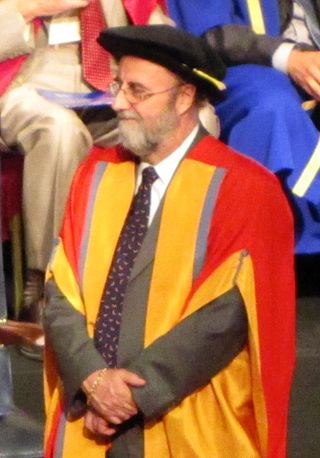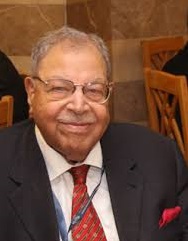
The Montreal Protocol on Substances That Deplete the Ozone Layer is an international treaty designed to protect the ozone layer by phasing out the production of numerous substances that are responsible for ozone depletion. It was agreed on 16 September 1987, and entered into force on 1 January 1989. Since then, it has undergone several amendments and adjustments, with revisions agreed to in 1990 (London), 1992 (Copenhagen), 1995 (Vienna), 1997 (Montreal), 1999 (Beijing), 2007 (Montreal), 2016 (Kigali) and 2018 (Quito). As a result of the international agreement, the ozone hole in Antarctica is slowly recovering. Climate projections indicate that the ozone layer will return to 1980 levels between 2040 and 2066. Due to its widespread adoption and implementation, it has been hailed as an example of successful international co-operation. Former UN Secretary-General Kofi Annan stated that "perhaps the single most successful international agreement to date has been the Montreal Protocol". In comparison, effective burden-sharing and solution proposals mitigating regional conflicts of interest have been among the success factors for the ozone depletion challenge, where global regulation based on the Kyoto Protocol has failed to do so. In this case of the ozone depletion challenge, there was global regulation already being installed before a scientific consensus was established. Also, overall public opinion was convinced of possible imminent risks.

The United Nations Environment Programme (UNEP) is responsible for coordinating responses to environmental issues within the United Nations system. It was established by Maurice Strong, its first director, after the United Nations Conference on the Human Environment in Stockholm in June 1972. Its mandate is to provide leadership, deliver science and develop solutions on a wide range of issues, including climate change, the management of marine and terrestrial ecosystems, and green economic development. The organization also develops international environmental agreements; publishes and promotes environmental science and helps national governments achieve environmental targets.

Chlorofluorocarbons (CFCs) and hydrochlorofluorocarbons (HCFCs) are fully or partly halogenated hydrocarbons that contain carbon (C), hydrogen (H), chlorine (Cl), and fluorine (F), produced as volatile derivatives of methane, ethane, and propane.

Sir Robert Tony Watson CMG FRS is a British chemist who has worked on atmospheric science issues including ozone depletion, global warming and paleoclimatology since the 1980s. Most recently, he is lead author of the February 2021 U.N. report Making Peace with Nature.

The Global Environment Facility (GEF) is a multilateral environmental fund that provides grants and blended finance for projects related to biodiversity, climate change, international waters, land degradation, persistent organic pollutants (POPs), mercury, sustainable forest management, food security, and sustainable cities in developing countries and countries with economies in transition. It is the largest source of multilateral funding for biodiversity globally and distributes more than $1 billion a year on average to address inter-related environmental challenges.
David Leonard Downie is an American scholar focusing on international environmental politics and policy. He currently writes and teaches at Fairfield University.
The Vienna Convention for the Protection of the Ozone Layer is a multilateral environmental agreement signed in 1985 that provided frameworks for international reductions in the production of chlorofluorocarbons due to their contribution to the destruction of the ozone layer, resulting in an increased threat of skin cancer.

International Day for the Preservation of the Ozone Layer is celebrated on September 16 designed by the United Nations General Assembly. This designation had been made on December 19, 2000, in commemoration of the date, in 1987, on which nations signed the Montreal Protocol on Substances that Deplete the Ozone Layer. In 1994, the UN General Assembly proclaimed 16 September the International Day for the Preservation of the Ozone Layer, commemorating the date of the signing, in 1987, of the Montreal Protocol on Substances that Deplete the Ozone Layer. The closure of the hole in the ozone layer was observed 30 years after the protocol was signed. Due to the nature of the gases responsible for ozone depletion their chemical effects are expected to continue for between 50 and 100 years.

Mostafa Kamal Tolba was an Egyptian scientist who served for seventeen years as the executive director of the United Nations Environment Programme (UNEP). In that capacity he led development of the Montreal Protocol, which saved the ozone layer and thus millions of lives from skin cancer and other impacts.
Safe Planet: the United Nations Campaign for Responsibility on Hazardous Chemicals and Wastes is the UN Environment Programme (UNEP) and UN Food and Agricultural Organization-led global public awareness and outreach campaign for ensuring the safety of human health and the environment against hazardous chemicals and wastes.

OzonAction is a branch of the United Nations Environment Programme (UNEP) which has its main office in Paris, and is part of UNEP's Division of Technology, Industry and Economics (DTIE). Created in 1991, today it has staff located in five regional offices of UNEP, namely in Africa, Asia & the Pacific, Latin America and the Caribbean, and West Asia.

The Climate and Clean Air Coalition to Reduce Short-Lived Climate Pollutants (CCAC) was launched by the United Nations Environment Programme (UNEP) and six countries—Bangladesh, Canada, Ghana, Mexico, Sweden, and the United States—on 16 February 2012. The CCAC aims to catalyze rapid reductions in short-lived climate pollutants to protect human health, agriculture and the environment. To date, more than $90 million has been pledged to the Climate and Clean Air Coalition from Canada, Denmark, the European Commission, Germany, Japan, the Netherlands, Norway, Sweden, and the United States. The program is managed out of the United Nations Environmental Programme through a Secretariat in Paris, France.
Stephen Oliver Andersen is the Director of Research at the Institute for Governance & Sustainable Development (IGSD) and former co-chair (1989–2012) of the Montreal Protocol Technology and Economic Assessment Panel (TEAP) where he also chaired and co-chaired Technical Options Committees, Task Forces and Special Reports. He is one of the founders and leading figures in the success of the Montreal Protocol on Substances that Deplete the Ozone Layer that has phased out the chemicals that deplete the stratospheric ozone that protects the Earth against the harmful effects of ultraviolet radiation that causes skin cancer, cataracts, and suppression of the human immune system, destroys agricultural crops and natural ecosystems and deteriorates the built environment. Because ozone-depleting chemicals are also powerful greenhouse gases the Montreal Protocol also protected climate. Dr. Andersen was instrumental in the 2016 Kigali Amendment that will phase down hydrofluorocarbons once necessary to phase out chlorofluorocarbons (CFCs) fast enough to avoid ozone tipping points, but no longer necessary now that environmentally superior replacements are available or soon to be available. For his ambitious campaign saving the ozone layer, Dr. Andersen earned the 2021 Future of Life Award along with Joe Farman and Susan Solomon.
Ozone depletion and climate change are environmental challenges whose connections have been explored and which have been compared and contrasted, for example in terms of global regulation, in various studies and books.

K. Madhava Sarma (1938-2010) was the first Executive Secretary of the Vienna Convention for the Protection of the Ozone Layer and the Montreal Protocol on Substances that Deplete the Ozone Layer from 1991 to 2000 at the United Nations Environment Programme (UNEP). He is considered one of the founders and leading figures in the success of the Montreal Protocol that established legally binding controls on the production and consumption of chemicals that cause ozone depletion and damage the stratospheric ozone layer which protects the Earth against the harmful effects of ultraviolet radiation. These effects include skin cancer, sunburn, permanent blindness and cataracts as well as harm to plants and animals. The Montreal Protocol was recognized by Kofi Annan, former Secretary General of the United Nations as being “perhaps the single most successful international environmental agreement to date" and went on to become the first treaty in the history of the United Nations to be universally ratified in 2008 by 197 countries.
Akkihebbal Ramaiah (Ravi) Ravishankara ForMemRS FAAAS FRSC is a scientist specializing in Chemistry and Atmospheric Sciences, and University Distinguished Professor in the Departments of Chemistry and Atmospheric Sciences at Colorado State University, Fort Collins.

Durwood Zaelke is an American environmental litigator, professor, author, and advocate. As President and founder of the Institute for Governance & Sustainable Development (IGSD) in Washington, D.C., and Paris, he currently focuses on fast mitigation strategies to protect the climate, including strategies to reduce short-lived climate pollutants, in the context of the need for speed to limit anthropogenic warming to 1.5 °C.

The Kigali Amendment to the Montreal Protocol is an international agreement to gradually reduce the consumption and production of hydrofluorocarbons (HFCs). It is a legally binding agreement designed to create rights and obligations in international law.

The timeline of international climate politics is a list of events significant to the politics of climate change.













